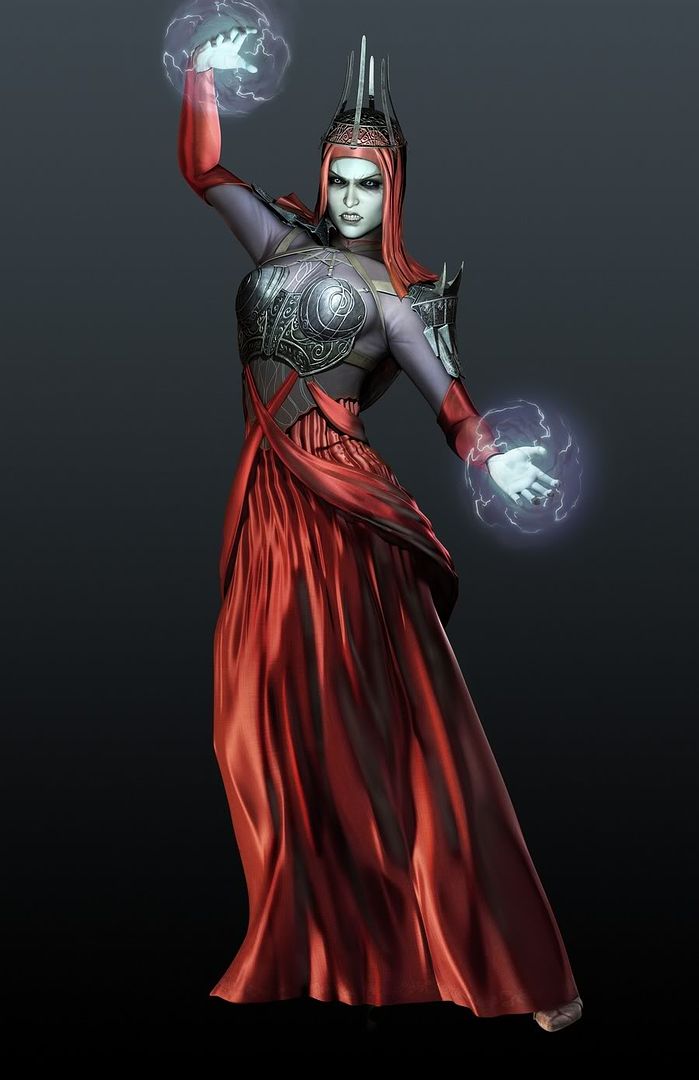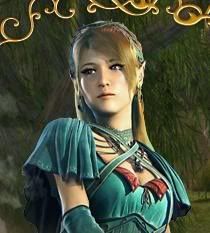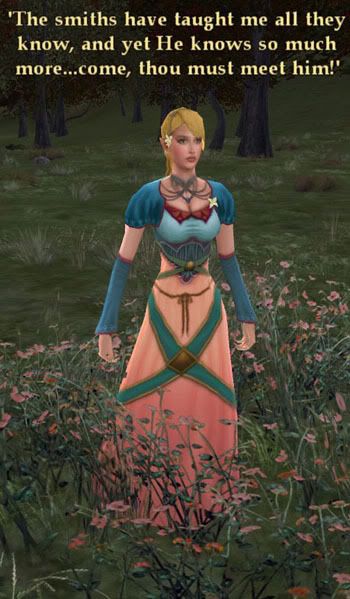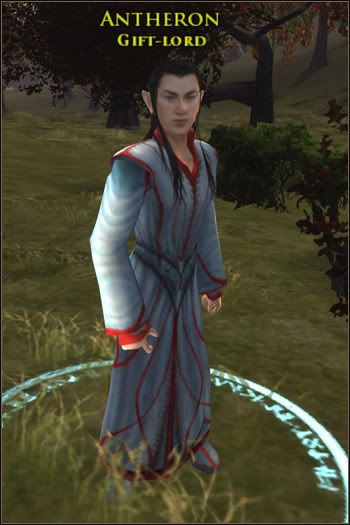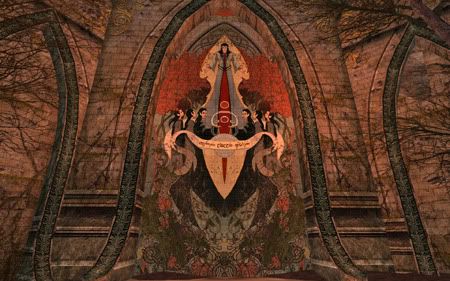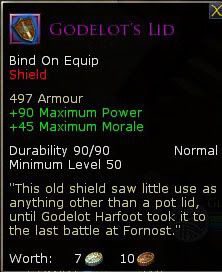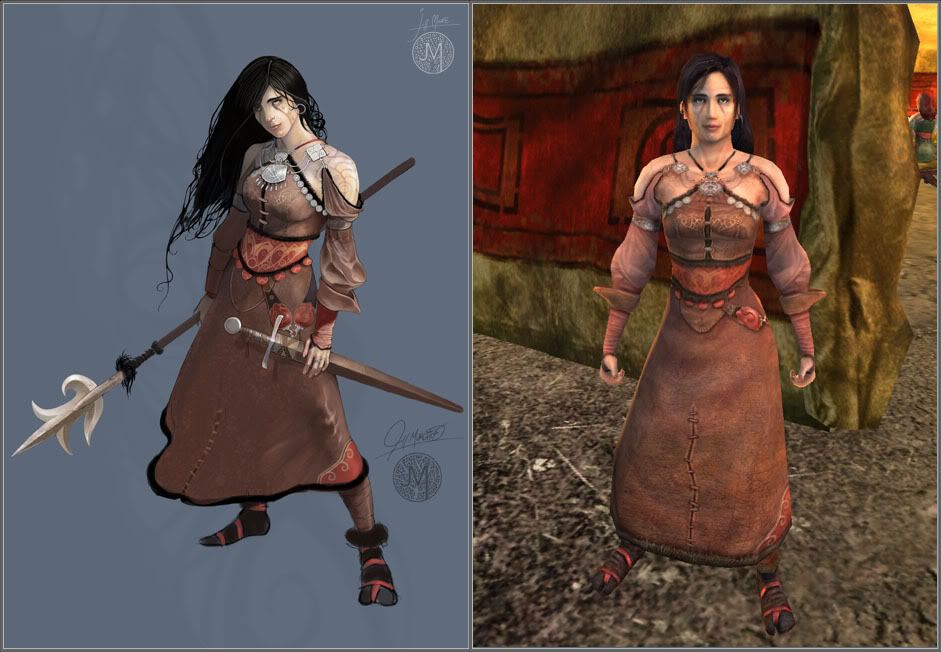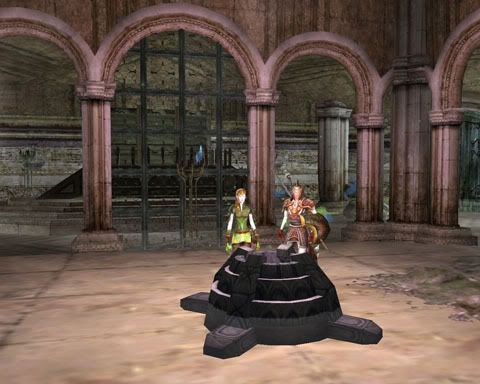 Here comes the twist (kinda): at first we are led by Laerdan to believe that Narmeleth and Amarthiel are not the same person and that his daughter’s hand bore the sword that struck Amarthiel down, but Champion of Angmar’s malicious spirit was so powerful that it possessed his daughter. The first part of the story – the one I described above – player only learns much later. But as they are one – as Narmeleth herself claims and we know she does not lie because Glorfindel admits that he senses no lies in her words – Laerdan’s first version of the story can not be true.
Here comes the twist (kinda): at first we are led by Laerdan to believe that Narmeleth and Amarthiel are not the same person and that his daughter’s hand bore the sword that struck Amarthiel down, but Champion of Angmar’s malicious spirit was so powerful that it possessed his daughter. The first part of the story – the one I described above – player only learns much later. But as they are one – as Narmeleth herself claims and we know she does not lie because Glorfindel admits that he senses no lies in her words – Laerdan’s first version of the story can not be true.What exactly happened is never revealed, we only know that Amarthiel was defeated and Laerdan took her captive with her ring. Maybe when Amarthiel catched a glimpse of her father in the heat of the battle it gave the spirit of Narmeleth strength to break from the spell temporary and surrender herself to him? This would mean that the first version of the story players get to know still holds a piece of truth – it would be Narmeleth that bested Amarthiel. This would also explain why Laerdan fell so easily for her decoy, when Champion of Angmar assumed the apperance of Narmeleth claiming that she managed to take over her evil spirit just for time long enough to tell him that if he gets Narchuil back to her, she could set free of it forever... After all, Laerdan would have seen her doing it before.
Whatever happened during the battle, only the outcome was certain. The army of the Witch King was driven forth in the pyrrhus victory of North in the Battle of Fornost and Laerdan captured Narmeleth barely recovered from under the control of Amarthiel as well as her ring Narchuil. Laerdan attempted to destroy it to set his daughter free from the shadows, but as the task was beyond him and he only managed to break it in two, he decided to secure the pieces in the best way he could. One f the fragments he gave to his friend, a warrior in King Earnur’s forces who will, after Earnur’s dissaperrance, serve his son Arvedui and perish with him in Forochel. The other half he kept himself.
Believing that Elrond would sentence his daughter to death and certain that only his love and care and her seclusion can recover his daughter from under the control of Sauron, Laerdan hid Narmeleth away in desolate area of Trollshaws. There, he locked her up in Sithad - now known as Delossad - assigning a long line of riverfolk (my guess, judging from Sara Oakheart’s appearance and from the fact that riverfolk – like hobbits – are resistant to corruption) as her guardians. He also hides his half of Narchuil there. Meanwhile Narmeleth shows little signs of recovery, often struggling between Amarthiel and her noble self and complaining that she doesn’t remember anything good and pure from the time before Sauron broke her mind – that she doesn’t remember flowers, only blood. This continue for a while, until one day, at the absence of Laerdan, Mordrith, a regent of Witch King, appears in Delossad and sets the Champion of Angmar free, allowing Amarthiel to take control of Narmeleth again. Out of malice, she kills her last guardian, docile Sara Oakheart and burns her cottage down.
The timeline for this event for not entirely clear – it had to happen between T.A. 2050 (this is when Eärnur, son of King Eärnil of Gondor shamed at Fornost accepts Witch-Kings challenge to duel and, as game-lore tells us, is captured, his spirit broken and he himself becomes Mordrith) and T.A. 3001 (when Frodo becomes the Ring-bearer). Actually at least a century before that, because the fisherman family in Trollshaws states that the remains of Sara Oakheart’s house were a ruin for as long as anyone can remember.
*** Rings were forged around S.A. 1900. Second Age Ended 3441, Battle of Fornost took place in T.A. 1974

